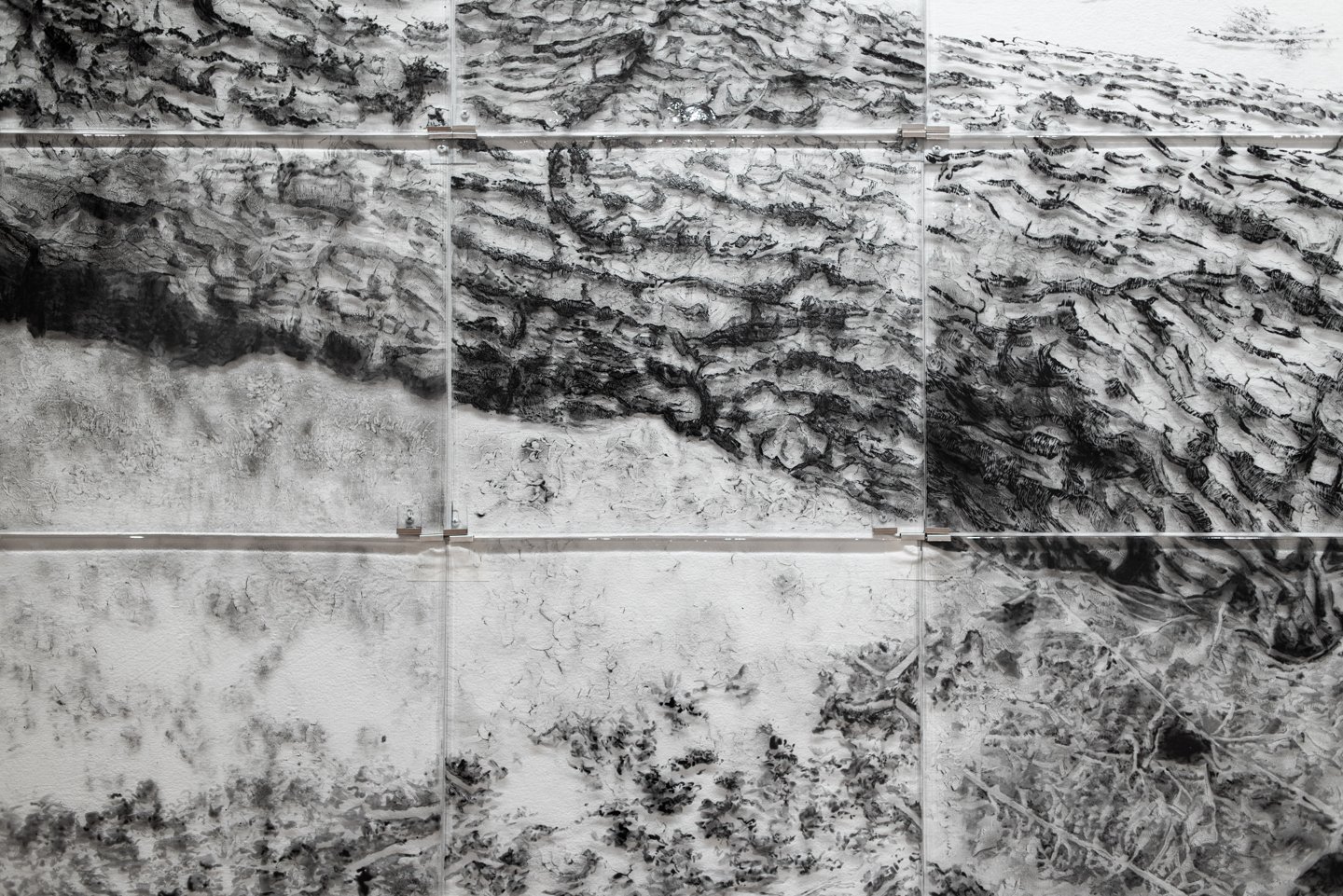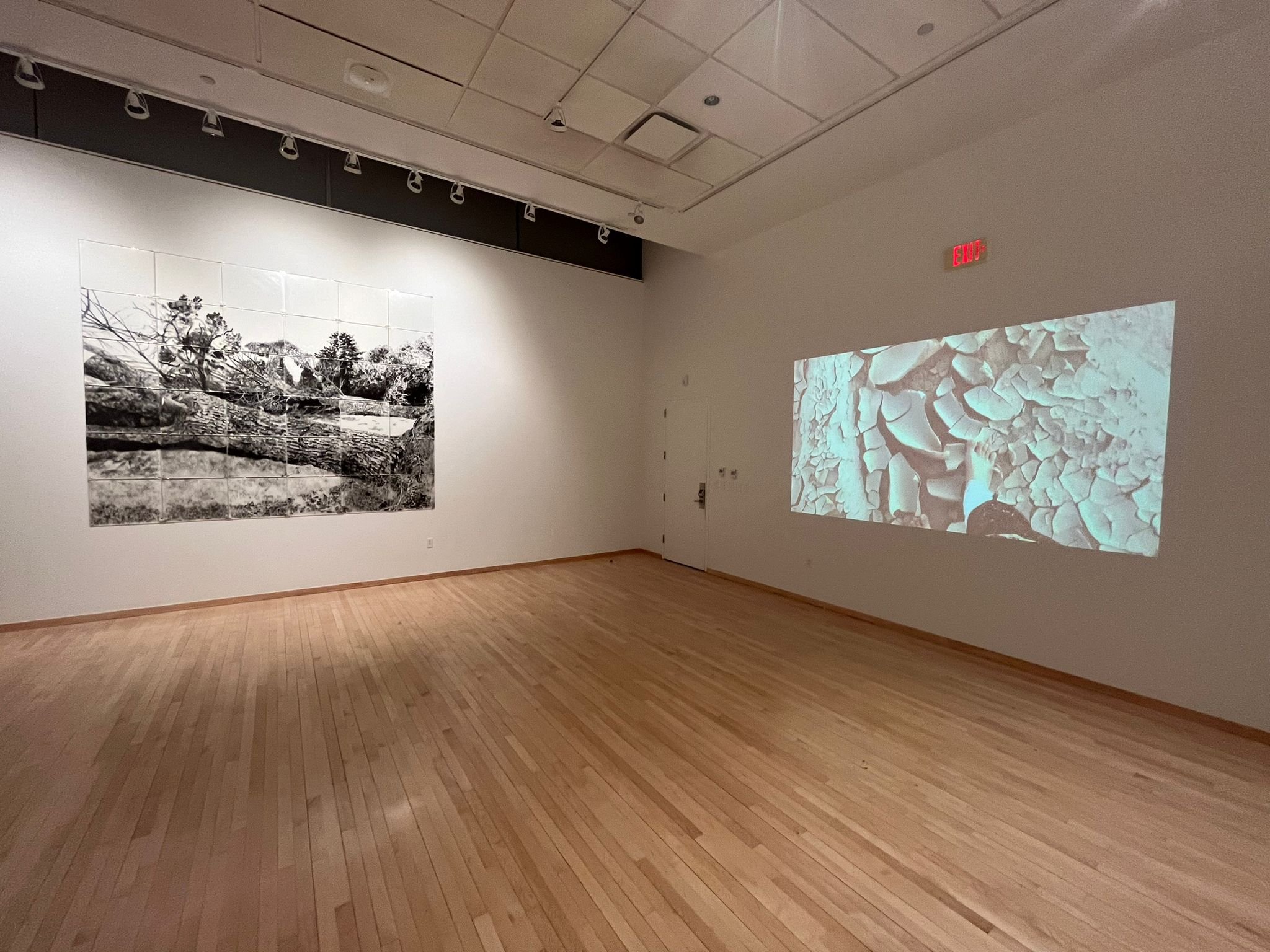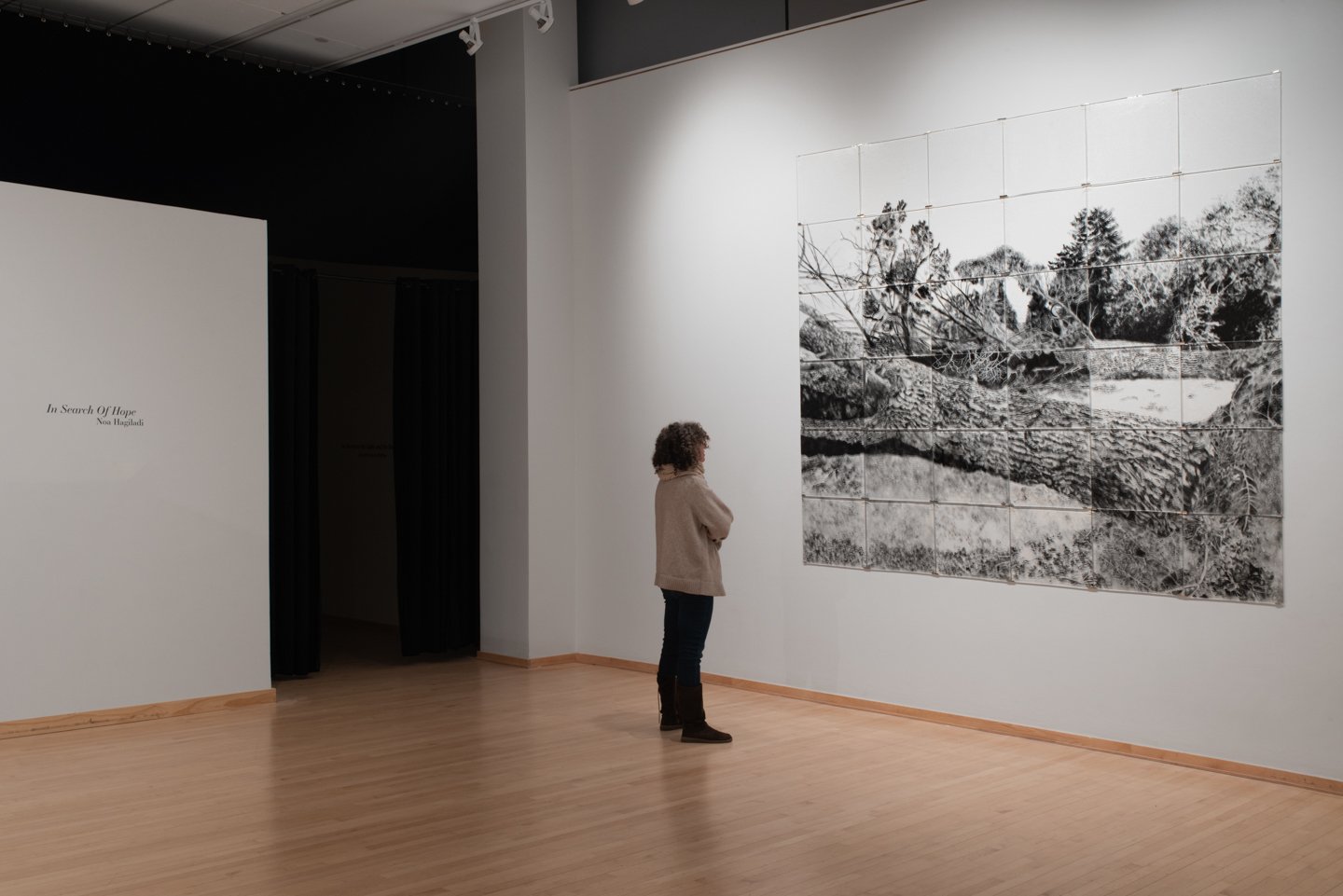




Glass artist Noa Hagiladi was raised in Israel on the values of peace in a land marred with endless conflict. “In Search of Hope” explores her healing, mental health, perseverance, and vulnerability as her connection to the soil and the life it propagates is uprooted by her distance from her home. Just as glass is fragile and capable of great strength, Hagiladi poetically balances the duality of the fractured landscape and the personal impact on those who call it home and have, for decades, lived through waves of conflict.
Representing a tapestry greater than any individual identity, Hagiladi’s most significant piece, a monochromatic glass sculpture that spans a wall, creates a composite landscape modeled from a photograph she took two years ago. The image represents a graveyard of fallen trees. These pine trees, lie uprooted and immovable. The transparent glass landscape of fallen trees requires the viewer to look beyond the image to the centuries past. Hagiladi’s glass panels hold the personal fractures she attempts to heal through making this work.
Hagiladi's work is a hopeful plea for peace and reconciliation through the lens of personal restoration and the push and pull of past and present, absence and presence, and desire and longing. On one of the walls fused glass panels that panoramically reveal a fissured desert. Finally, in conversation with the still glass sculptures, a video piece depicts the artist walking across the dry earth. Her bare feet overcoming the dry and audibly crunching desert represent sedulous progress, embodying a hopeful persistence.
For me, and any audience in this present moment, it is unavoidable to relate Hagiladi’s work to the loss, displacement, fracture, and trauma caused by the senseless violence across state-drawn lines and the fragile hope for peace that hangs by a thread. Hagiladi reminds us to preserve humanity and individual healing by sharing her emotional fractures and choosing hope. Her art is a powerful reminder of the urgent need for an end to violence.
Rachael Reynolds
PhD Student
Department of Art History
Tyler School of Art & Architecture
Temple University


